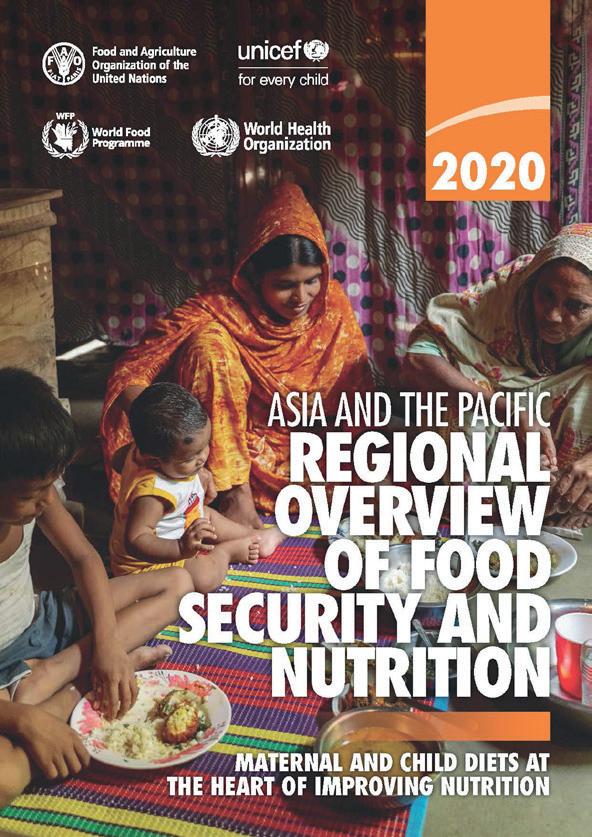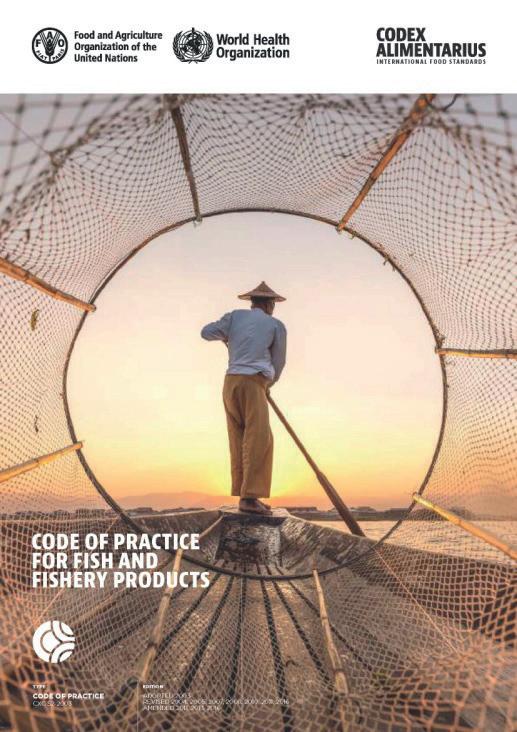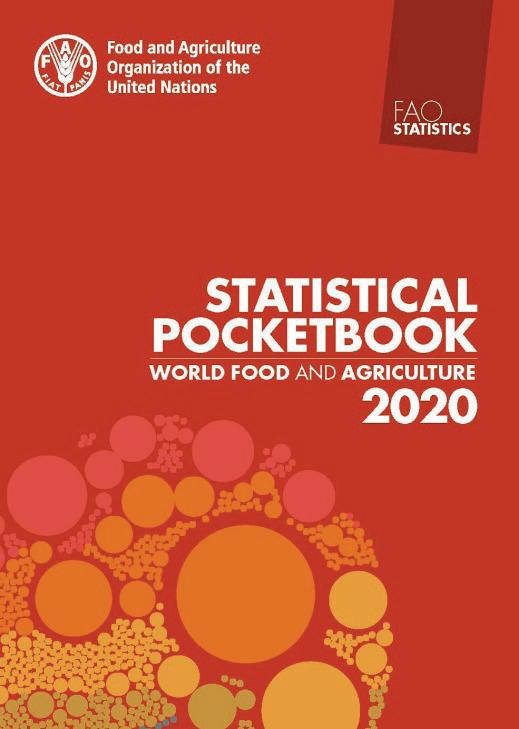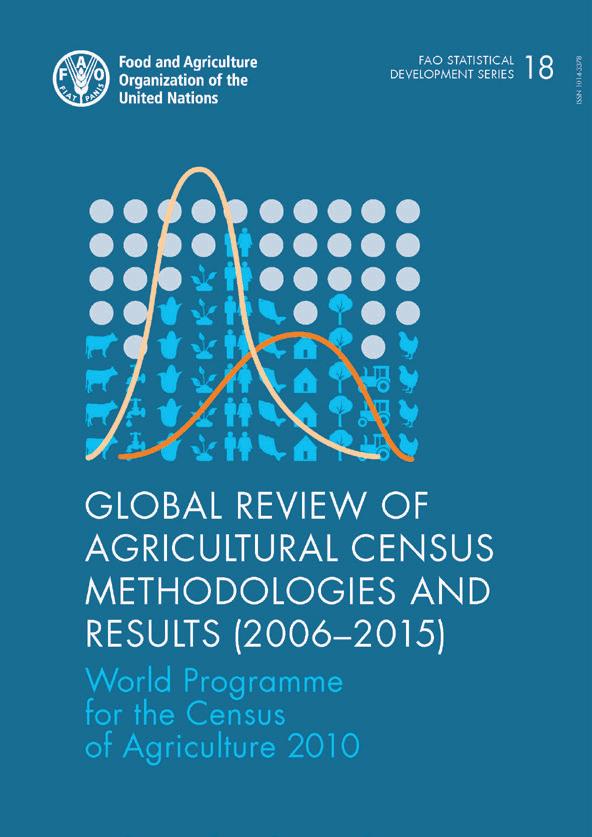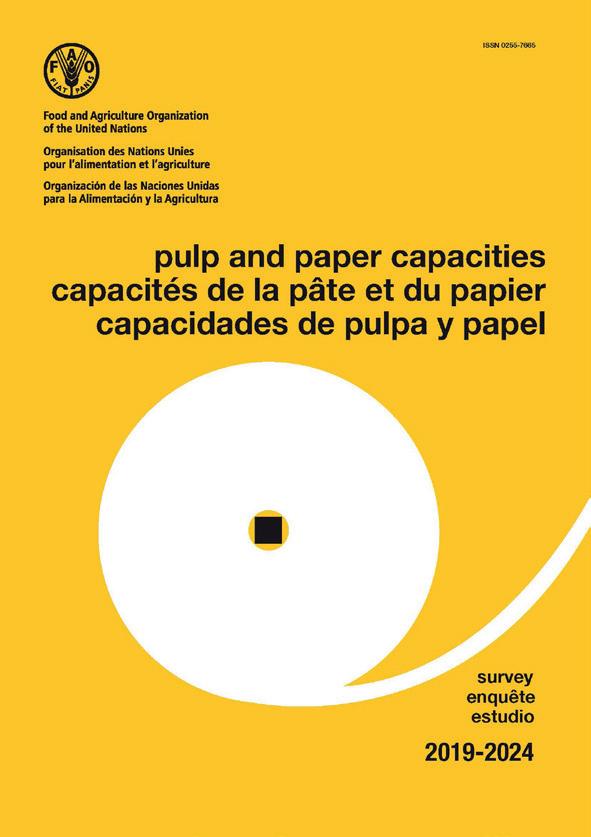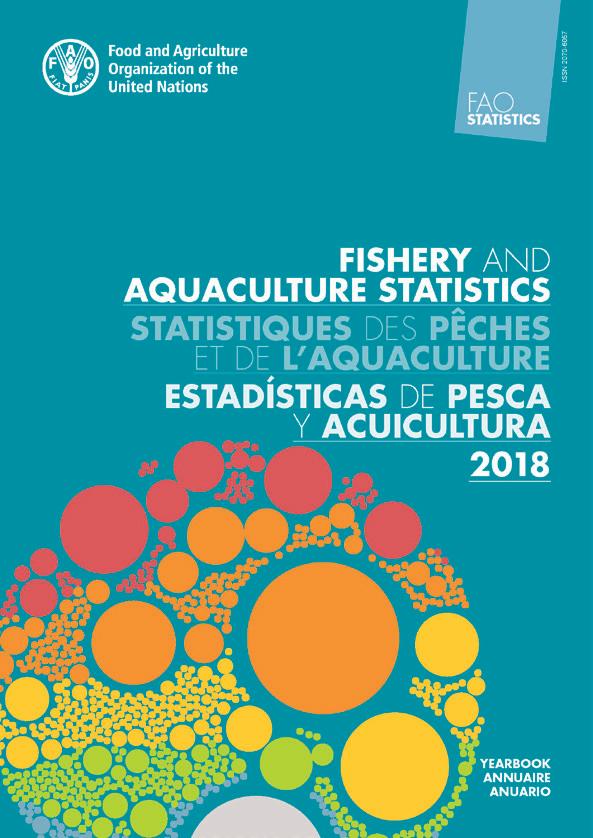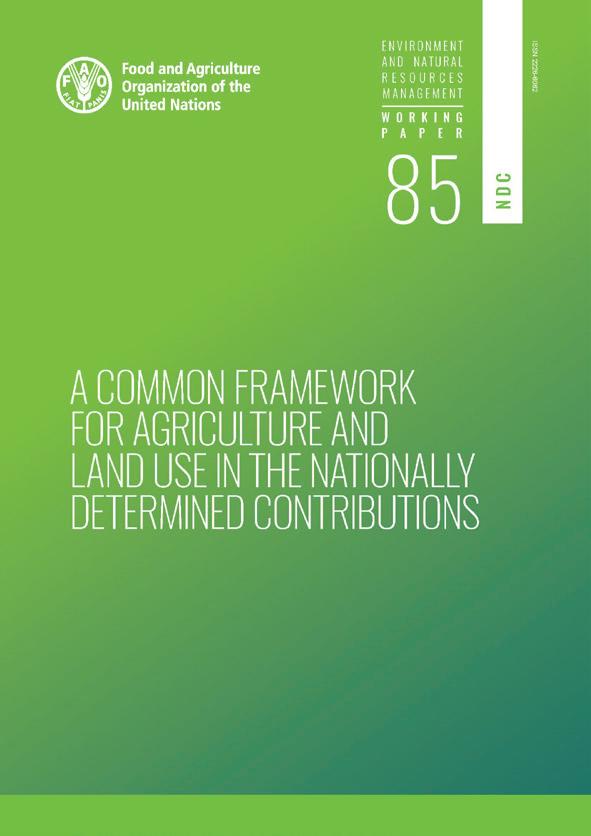
14 minute read
Agriculture
from News 1/2021
by CIHEAM-Bari
LibraryNewsletter OrganicAgriculture Newsletter Economic Books Fisheries Agriculture Food and nutrition Aquaculture Natural resourcesMAIBDocumentation Center Documentation Center Mediterranean Agronomic Institue of Bari N° 1 - 2021 - January-Februarywww.iamb.it
Food Outlook – Biannual Report on Global Food Markets: November 2020
Advertisement
Type of publication: Book Author: FAO Publisher: FAO Year of publications: 2020 Place of publication: Rome, Italy Pages: #107 p. ISBN: 978-92-5-133590-1 Serial Title: Food Outlook ; 2020 doi: https://doi.org/10.4060/cb1993en
Agrovoc: commodity markets; crop production; crop forecasting; trade policies; agricultural prices; food prices; international trade policies; reports
Abstract: As it was projected earlier in the year, while most markets were braced for a major global economic downturn, the food sector, including markets for bananas and tropical fruits, continued to display more resilience to the Covid-19 pandemic than other sectors. This report provides supply and demand forecasts for basic foodstuffs, fish and fishery products along with price analysis, policy information and a preliminary assessment of the impacts of the Covid-19 pandemic on trade in bananas and tropical fruits. The report’s special feature reviews recent trends in food imports bills and export earnings. Food Outlook is published by the Markets and Trade Division of FAO as part of the Global Information and Early Warning System (GIEWS). It is a biannual publication (November and June) focusing on developments in global food markets. Food Outlook maintains a close synergy with another major GIEWS publication, Crop Prospects and Food Situation, especially with regard to the coverage of cereals. Food Outlook is available in English. The summary section is also available in Arabic, Chinese, French, Russian and Spanish.
Download publication
Cite this content as: FAO. 2020. Food Outlook – Biannual Report on Global Food Markets: November 2020. Rome.
back to index
AGRICULTURE

Smart irrigation - Smart wash. Solutions in response to the pandemic crisis in Africa.
Type of publication: Book Author: Salman, M., Pek, E., and Ahmad, W. Publisher: FAO Year of publications: 2020 Place of publication: Rome, Italy Pages: 109 p. ISBN: 978-92-5-133390-7 Serial Title: FAO Land and Water Discussion Papers ; 16 doi: https://doi.org/10.4060/cb1306en
Agrovoc: crop production; Coronavirus; impact assessment; indicators; vulnerability; risk assessment; cartography; agricultural water use; irrigation systems; water requirements; water supply; water management; crop improvement; investment;Africa
Abstract: Uncertainties related to the impacts of COVID-19 on daily life are increasingly growing. Inherent effects have grown beyond the well-defined sphere of health risks and have shocked the livelihood and food security in several countries. Particularly in the poorest countries, the impact is more devastating due to the limited availability of
LibraryNewsletter OrganicAgriculture Newsletter Economic Books Fisheries Agriculture Food and nutrition Aquaculture Natural resourcesMAIBDocumentation Center Documentation Center Mediterranean Agronomic Institue of Bari News DOCUMENTATION CENTRE - CIHEAM BARI from the Library
resources to slow down the spread of the disease. These countries require immediate actions to safeguard food security and human health. Irrigation has a great role in improving crop productivity and ensuring food security. However, expanding irrigation could impact the availability of water for sanitation and hygiene which has a central role in slowing down the spread of the disease. It is, thus, clearer that irrigation development should also comply with the requirement of extended need of water for sanitation and hygiene. Developing multiple water use would certainly allow to fight the pandemic while ensuring the basic needs of food security in rural communities. To support the concept of multiple water use, a new initiative called SMART irrigation – SMART WASH is proposed for corporate solutions to enhance irrigation and provide WASH facilities to vulnerable communities, thus, responding to the critical needs in times of pandemic crisis.
Download publication
Cite this content as: Salman, M., Pek, E. and Ahmad, W. 2020. Smart irrigation – Smart wash. Solutions in response to the pandemic crisis in Africa. FAO Land and Water No. 16. Rome, FAO.

Water accounting in the Niger River Basin. WaPOR water accounting reports.
Type of publication: Book Author: FAO and IHE Delft Publisher: FAO Year of publications: 2020 Place of publication: Rome, Italy Other Entities Involved: IHE Delft Pages: 120 p. ISBN: 978-92-5-133378-5 doi: https://doi.org/10.4060/cb1274en
Agrovoc: water resources; water management; water supply; water availability; agricultural sector; water productivity; water use efficiency; remote sensing; case studies; Niger River; Benin; Burkina Faso; Cameroon; Chad; Cote d’Ivoire; Guinea; Mali; Niger; Nigeria
Abstract: The Niger River Basin is a transboundary basin covering nine riparian countries to the Niger River that are increasingly putting pressure on the available water resources as their populations expand. Yet, the nine countries are also among the poorest in the world and adequate exploitation of the water of the basin could be part of a broader strategy for poverty reduction in these countries. Major challenges to that end are the lacking water infrastructure and growing vulnerability to extreme weather hazards as the climate changes. In that context, a better understanding of the state of water resources in the basin is a crucial departure point for any measures towards the sustainable use of water. The Water Accounting Plus (WA+) system designed by IHE Delft with its partners FAO and IWMI has been applied to gain full insights into the state of the water resources in the basin.
Download publication
Cite this content as: FAO and IHE Delft. 2020. Water Accounting in the Niger River Basin. FAO WaPOR water accounting reports. Rome.
LibraryNewsletter OrganicAgriculture Newsletter Economic Books Fisheries Agriculture Food and nutrition Aquaculture Natural resourcesMAIBDocumentation Center Documentation Center Mediterranean Agronomic Institue of Bari N° 1 - 2021 - January-Februarywww.iamb.it

The State of Food and Agriculture 2020. Overcoming water challenges in agriculture.
Type of publication: Book Author: FAO Publisher: FAO Year of publications: 2020 Place of publication: Rome, Italy Pages: 210 p. ISBN: 978-92-5-133441-6 Serial Title: The State of Food and Agriculture (SOFA) ; 2020 doi: https://doi.org/10.4060/cb1447en
Agrovoc: agricultural water use; water availability; water scarcity; irrigated farming; water productivity; water management; governance; water policy; sustainable agriculture; food security; Sustainable Development Goals; data collection
Abstract: Intensifying water constraints threaten food security and nutrition. Thus, urgent action is needed to make water use in agriculture more sustainable and equitable. Irrigated agriculture remains by far the largest user of freshwater, but scarcity of freshwater is a growing problem owing to increasing demand and competition for freshwater resources. At the same time, rainfed agriculture is facing increasing precipitation variability driven by climate change. These trends will exacerbate disputes among water users and inequality in access to water, especially for smallscale farmers, the rural poor and other vulnerable populations. The State of Food and Agriculture 2020 presents new estimates on the pervasiveness of water scarcity in irrigated agriculture and of water shortages in rainfed agriculture, as well as on the number of people affected. It finds major differences across countries, and also substantial spatial variation within countries. This evidence informs a discussion of how countries may determine appropriate policies and interventions, depending on the nature and magnitude of the problem, but also on other factors such as the type of agricultural production system and countries’ level of development and their political structures. Based on this, the publication provides guidance on how countries can prioritize policies and interventions to overcome water constraints in agriculture, while ensuring efficient, sustainable and equitable access to water.
Download publication
Cite this content as: FAO. 2020. The State of Food and Agriculture 2020. Overcoming water challenges in agriculture. Rome.
back to index
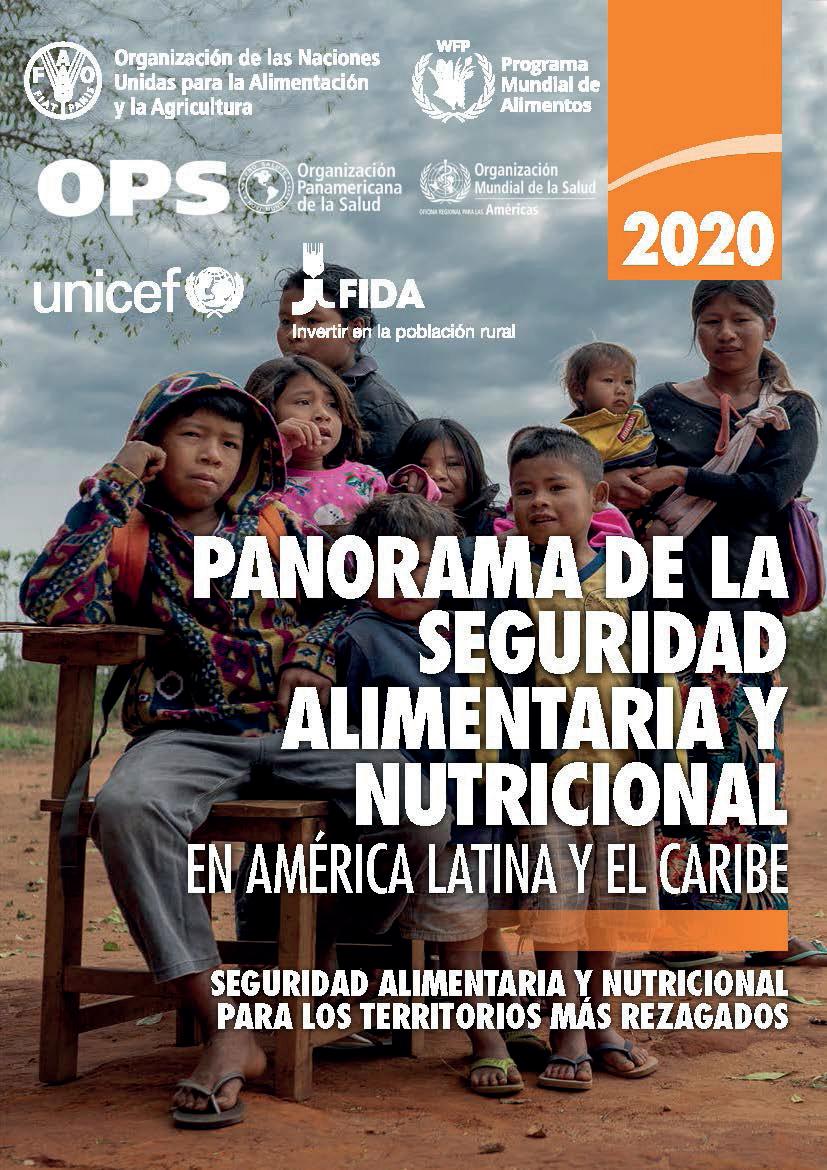
Panorama de la seguridad alimentaria y nutricional en América Latina y el Caribe 2020. Seguridad alimentaria y nutricional para los territorios más rezagados.
Type of publication: Book Author: FAO, FIDA, OPS, WFP y UNICEF Publisher: FAO, OPS, WFP and UNICEF Year of publications: 2020 Place of publication: Santiago, Chile Other Entities Involved: OPS, WFP, UNICEF Pages: 150 p. ISBN: 978-92-5-133665-6 Serial Title: Regional Overview of Food Insecurity, Latin America and the Caribbean ; 13 doi: https://doi.org/10.4060/cb2242es
LibraryNewsletter OrganicAgriculture Newsletter Economic Books Fisheries Agriculture Food and nutrition Aquaculture Natural resourcesMAIBDocumentation Center Documentation Center Mediterranean Agronomic Institue of Bari News DOCUMENTATION CENTRE - CIHEAM BARI from the Library
Agrovoc: food security; malnutrition; poverty; right to food; food policies; Latin America; Caribbean
Abstract: Las metas de la Agenda 2030 de Desarrollo Sostenible relacionadas con la seguridad alimentaria y la nutrición no podrán alcanzarse mientras en algunos territorios de América Latina y el Caribe sigan viviendo poblaciones con niveles de malnutrición que, como mínimo, duplican los promedios nacionales. A menudo, las oportunidades económicas en estos lugares son limitadas, la presencia de servicios públicos es escasa y la exposición a eventos climáticos severos es elevada. Precisamente, es en estos territorios históricamente rezagados donde las políticas públicas impulsadas en la región han mostrado un menor impacto y donde es apremiante generar una nueva agenda de instrumentos públicos que atiendan a las características de las comunidades que los habitan. El desarrollo pleno y sostenible de los territorios que se están “quedando atrás” no solo es una obligación que se desprende de los derechos de las personas que los habitan. Además, liberaría el potencial social, económico, ambiental y cultural de esos territorios en beneficio de todas las sociedades y del planeta. Se espera que el Panorama 2020 ayude a visibilizar los desafíos de los territorios con peores indicadores en términos de alimentación y nutrición, y que sirva para movilizar el compromiso político y la atención pública en los lugares que sufren mayores rezagos respecto a los promedios nacionales. Al igual que en ediciones anteriores, también se proporciona información sobre las políticas y los programas que los países están desarrollando para enfrentar todas las formas de malnutrición. El año 2020 se recordará durante muchas décadas por la pandemia provocada por la COVID-19. Los indicadores de la Agenda 2030 que se utilizan en esta publicación aún no recogen los distintos impactos del nuevo coronavirus. Pero en cada uno de los capítulos y secciones que siguen se hace referencia a algunas de las posibles implicaciones de la pandemia para el futuro.
Download publication
Cite this content as: FAO, FIDA, OPS, WFP y UNICEF. 2020. Panorama de la seguridad alimentaria y nutrición en América Latina y el Caribe 2020. Santiago de Chile.
Increasing the benefits and sustainability of irrigation through integration of fisheries. A guide for water planners, managers and engineers
Type of publication: Book Author: FAO, WorldFish and IWMI Publisher: FAO, WorldFish and IWMI Year of publications: 2020 Place of publication: Colombo, Sri Lanka Other Entities Involved: IWMI/WorldFish Pages: 92 p. ISBN: 978-92-5-133601-4 doi: https://doi.org/10.4060/cb2025en
Agrovoc: water management; irrigation systems; food security; sustainable fisheries; ecosystem services; agrifood systems
Abstract: There is increasing recognition of the need to bring about changes across the full spectrum of agricultural practices to ensure that, in future, food production systems are more diverse, sustainable and resilient. In this context, the objectives of irrigation need to be much more ambitious, shifting away from simply maximizing crop yields to maximizing net benefits across a range of uses of irrigation water, including ecosystems and nature-based solutions. One important way to achieve this is by better integrating fisheries into the planning, design, construction, operation and management of irrigation systems. Irrigation – a major contributor to the Green Revolution – has significantly improved agricultural production worldwide, with consequent benefits for food security, livelihoods and poverty alleviation. Today, irrigated agriculture represents about 21 percent of cultivated land, but contributes approximately 40% of the total global crop production. Many governments continue to invest in irrigation as a cornerstone of food security and rural development. Investments in irrigation often represent a pragmatic form of adaptation to changing climatic conditions. This guide focuses on how to sustainably optimize and broaden the range of benefits from irrigation development - not only economic but also social and environmental benefits . It emphasizes the opportunities that fisheries could provide to increase food production and economic returns, enhance
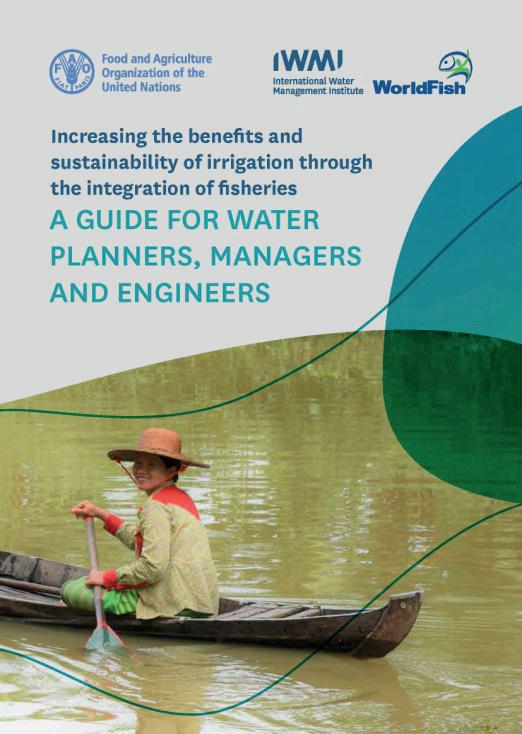
LibraryNewsletter OrganicAgriculture Newsletter Economic Books Fisheries Agriculture Food and nutrition Aquaculture Natural resourcesMAIBDocumentation Center Documentation Center Mediterranean Agronomic Institue of Bari N° 1 - 2021 - January-Februarywww.iamb.it
livelihoods and public health outcomes, and maintain key ecosystem services. The guide considers possible trade-offs between irrigation and fisheries, and provides recommendations on how these could be minimized.
Download publication
Cite this content as: FAO, WorldFish and IWMI. 2020. Increasing the benefits and sustainability of irrigation through the integration of fisheries - A guide for water planners, managers and engineers. Colombo.
back to index

Agriculture and climate change. Law and governance in support of climate smart agriculture and international climate change goals
Type of publication: Book Author: FAO Publisher: FAO Year of publications: 2020 Place of publication: Rome, Italy Pages: 356 p. ISBN: 978-92-5-133501-7 Serial Title: FAO Legislative Studies ; 115 doi: https://doi.org/10.4060/cb1593en
Agrovoc: agricultural sector; climate change adaptation; climate change mitigation;climate-smart agriculture;legal frameworks;governance;international law; financing
Abstract: Many national legal frameworks still do not include laws and measures specifically intended to tackle climate change in the agriculture sectors. However, national laws and institutional frameworks are necessary for good governance and can operate to support the implementation of national policy and international commitments, including on climate change. Indeed, Target 16.3 of the Sustainable Development Goals calls for the promotion of the rule of law, and the assurance of equal access to justice for all. This is both an important stand-alone goal and an enabling goal for the realization of the transformative 2030 Agenda for Sustainable Development. Furthermore, the Food and Agriculture Organization of the United Nations (FAO) sees appropriately designed, informed and responsive national legal and institutional frameworks as key to supporting the implementation of countries’ commitments under the 2015 Paris Agreement, as well as their Nationally Determined Contribution in the food, agriculture and natural resources sectors. Climate change presents multiple challenges and it cannot be addressed effectively in silos. Attention must be paid not only to specific agriculture sectors, but also to governance areas that are interconnected with agriculture, such as public spending and investment, social protection and rural development. Efforts should be coordinated with the engagement of civil society, including the legal profession, vulnerable groups and the private sector. This Study addresses the principal expressions of the food and agriculture sector (crops and livestock agriculture, forestry and fisheries), looking at the critical cross-cutting issues and their integration into agriculture law. It provides a comprehensive overview of the legal and institutional issues to consider when working towards preparing the agriculture sector for the challenges of climate change.
Download publication
Cite this content as: FAO. 2020. Agriculture and climate change. Law and governance in support of climate smart agriculture and international climate change goals. FAO Legislative Studies No. 115. Rome.
LibraryNewsletter OrganicAgriculture Newsletter Economic Books Fisheries Agriculture Food and nutrition Aquaculture Natural resourcesMAIBDocumentation Center Documentation Center Mediterranean Agronomic Institue of Bari News DOCUMENTATION CENTRE - CIHEAM BARI from the Library
A protocol for measurement, monitoring, reporting and verification of soil organic carbon in agricultural landscapes: GSOC-MRV Protocol
Type of publication: Book Author: FAO Publisher: FAO Year of publications: 2020 Place of publication: Rome, Italy Other Entities Involved: ITPS Pages: 140 p. ISBN: 978-92-5-133126-2 doi: https://doi.org/10.4060/cb0509en
Agrovoc: soil organic carbon; carbon sequestration; land improvement; cultivated land; methodology; monitoring techniques; sustainable development
Abstract: This document provides a conceptual framework and standard methodologies for the monitoring, reporting and verification of changes in SOC stocks and GHG emissions/removals from agricultural projects that adopt sustainable soil management practices (SSM) at farm level. It is intended to be applied in different agricultural lands, including annual and perennial crops (food, fibre, forage and bioenergy crops), paddy rice, grazing lands with livestock including pastures, grasslands, rangelands, shrublands, silvopasture and agroforestry. Although developed for projects carried out at farm level, potential users include investors, research institutions, government agencies, consultants, agricultural companies, NGOs, individual farmers or farmer associations, supply chain and other users who are interested in measuring and estimating SOC stocks and changes and GHG emissions in response to management practices. The document is an outcome of the successful Global Symposium on Soil Organic Carbon (GSOC17), which was held in Rome in March 2017. The document is of technical nature in support of the Soil organic carbon (SOC) sequestration work. Its use is not mandatory but of voluntary nature.

Download publication
Cite this content as: FAO. 2020. A protocol for measurement, monitoring, reporting and verification of soil organic carbon in agricultural landscapes –GSOC-MRV Protocol. Rome.

WaPOR database methodology: release 2020.
Type of publication: Book Author: FAO Publisher: FAO Year of publications: 2020 Place of publication: Rome, Italy Pages: 90 p. ISBN: 978-92-5-132981-8 doi: https://doi.org/10.4060/ca9894en
Agrovoc: agricultural production; land use; water use; water productivity; water availability; climate; precipitation; phenology; evapotranspiration; above ground biomass; land cover; classification; remote sensing; spatial data; databases; FAO;Africa; Middle East
Abstract: The FAO portal to monitor Water Productivity through Open Access of Remotely sensed derived data (WaPOR) provides, as of today, access to 11 years of continued observations over Africa and the Near East. The portal provides open access to various spatial data layers related to land and water use for agricultural production and allows for direct data queries, time series analyses, area statistics and data download of key variables to estimate water and

